2. Lange C, Abubakar I, Alffenaar JWC, Bothamley G, Caminero JA, Carvalho ACC, et al. Management of patients with multidrug-resistant/extensively drug-resistant tuberculosis in Europe: a TBNET consensus statement. Eur Respir J. 2014; 44(1):23–63. PMID:
24659544.

3. Dheda K, Gumbo T, Gandhi NR, Murray M, Theron G, Udwadia Z, et al. Global control of tuberculosis: from extensively drug-resistant to untreatable tuberculosis. Lancet Respir Med. 2014; 2(4):321–338. PMID:
24717628.

4. Yang C, Luo T, Shen X, Wu J, Gan M, Xu P, et al. Transmission of multidrug-resistant
Mycobacterium tuberculosis in Shanghai, China: a retrospective observational study using whole-genome sequencing and epidemiological investigation. Lancet Infect Dis. 2017; 17(3):275–284. PMID:
27919643.
6. Bai GH, Park YK, Choi YW, Bai JI, Kim HJ, Chang CL, et al. Trend of anti-tuberculosis drug resistance in Korea, 1994–2004. Int J Tuberc Lung Dis. 2007; 11(5):571–576. PMID:
17439684.
7. Choi JC, Lim SY, Suh GY, Chung MP, Kim H, Kwon OJ, et al. Drug resistance rates of
Mycobacterium tuberculosis at a private referral center in Korea. J Korean Med Sci. 2007; 22(4):677–681. PMID:
17728509.
8. Lee HY, Lee J, Lee YS, Kim MY, Lee HK, Lee YM, et al. Drug-resistance pattern of
Mycobacterium tuberculosis strains from patients with pulmonary and extrapulmonary tuberculosis during 2006 to 2013 in a Korean tertiary medical center. Korean J Intern Med. 2015; 30(3):325–334. PMID:
25995663.
9. Kim SY, Kim HJ, Kim CK, Yoon HR, Bae HG, Lee SH, et al. The recent status of multidrug-and extensively drug-resistant tuberculosis in Korea. Tuberc Respir Dis (Seoul). 2010; 68(3):146–154.
10. Mok JH, Kang BH, Lee T, Lee HK, Jang HJ, Cho YJ, et al. Additional drug resistance patterns among multidrug-resistant tuberculosis patients in Korea: implications for regimen design. J Korean Med Sci. 2017; 32(4):636–641. PMID:
28244290.

16. Stinson K, Kurepina N, Venter A, Fujiwara M, Kawasaki M, Timm J, et al. MIC of delamanid (OPC-67683) against
Mycobacterium tuberculosis clinical isolates and a proposed critical concentration. Antimicrob Agents Chemother. 2016; 60(6):3316–3322. PMID:
26976868.
18. Devasia RA, Blackman A, Gebretsadik T, Griffin M, Shintani A, May C, et al. Fluoroquinolone resistance in
Mycobacterium tuberculosis: the effect of duration and timing of fluoroquinolone exposure. Am J Respir Crit Care Med. 2009; 180(4):365–370. PMID:
19483111.
19. Huang TS, Kunin CM, Lee SSJ, Chen YS, Tu HZ, Liu YC. Trends in fluoroquinolone resistance of
Mycobacterium tuberculosis complex in a Taiwanese medical centre: 1995–2003. J Antimicrob Chemother. 2005; 56(6):1058–1062. PMID:
16204341.
20. Falzon D, Gandhi N, Migliori GB, Sotgiu G, Cox HS, Holtz TH, et al. Resistance to fluoroquinolones and second-line injectable drugs: impact on multidrug-resistant TB outcomes. Eur Respir J. 2013; 42(1):156–168. PMID:
23100499.

21. Lee M, Han J, Kim YR, Kwak N, Kim JH, Park O, et al. Multidrug-resistant tuberculosis in South Korea: a retrospective analysis of national registry data in 2011–2015. Int J Tuberc Lung Dis. 2019; 23(7):850–857. PMID:
31439118.

22. Yang JS, Kim KJ, Choi H, Lee SH. Delamanid, bedaquiline, and linezolid minimum inhibitory concentration distributions and resistance-related gene mutations in multidrug-resistant and extensively drug-resistant tuberculosis in Korea. Ann Lab Med. 2018; 38(6):563–568. PMID:
30027700.

23. Xu J, Wang B, Hu M, Huo F, Guo S, Jing W, et al. Primary clofazimine and bedaquiline resistance among isolates from patients with multidrug-resistant tuberculosis. Antimicrob Agents Chemother. 2017; 61(6):e00239–17. PMID:
28320727.

24. Villellas C, Coeck N, Meehan CJ, Lounis N, de Jong B, Rigouts L, et al. Unexpected high prevalence of resistance-associated Rv0678 variants in MDR-TB patients without documented prior use of clofazimine or bedaquiline. J Antimicrob Chemother. 2017; 72(3):684–690. PMID:
28031270.
25. Wen S, Jing W, Zhang T, Zong Z, Xue Y, Shang Y, et al. Comparison of in vitro activity of the nitroimidazoles delamanid and pretomanid against multidrug-resistant and extensively drug-resistant tuberculosis. Eur J Clin Microbiol Infect Dis. 2019; 38(7):1293–1296. PMID:
30953211.

26. Trébucq A, Schwoebel V, Kashongwe Z, Bakayoko A, Kuaban C, Noeske J, et al. Treatment outcome with a short multidrug-resistant tuberculosis regimen in nine African countries. Int J Tuberc Lung Dis. 2018; 22(1):17–25. PMID:
29149917.

27. Lempens P, Decroo T, Aung KJM, Hossain MA, Rigouts L, Meehan CJ, et al. Initial resistance to companion drugs should not be considered an exclusion criterion for the shorter multidrug-resistant tuberculosis treatment regimen. Int J Infect Dis. 2020; 100:357–365. PMID:
32829049.

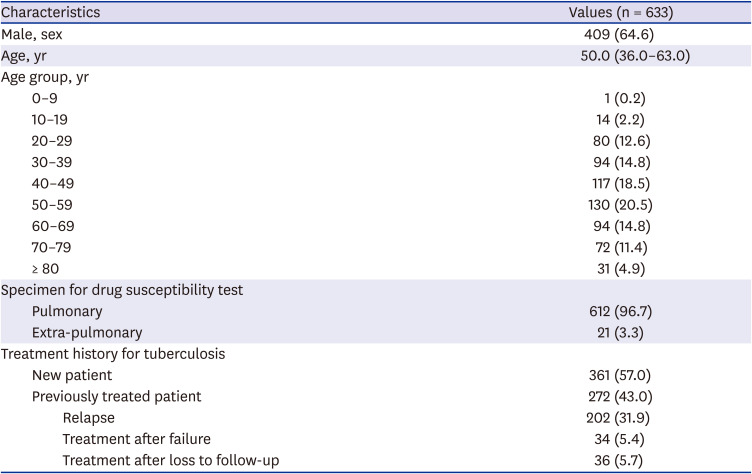
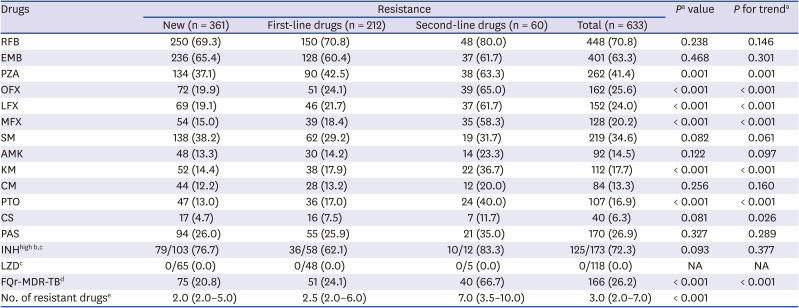
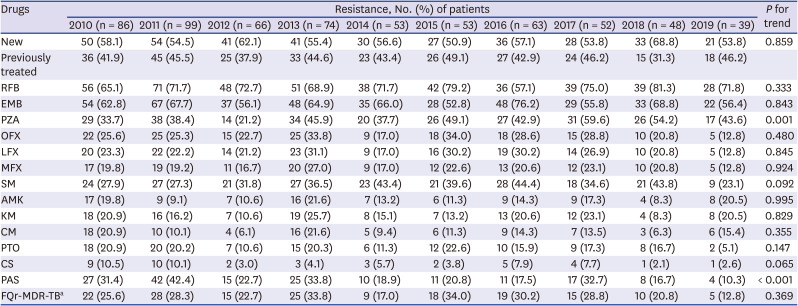
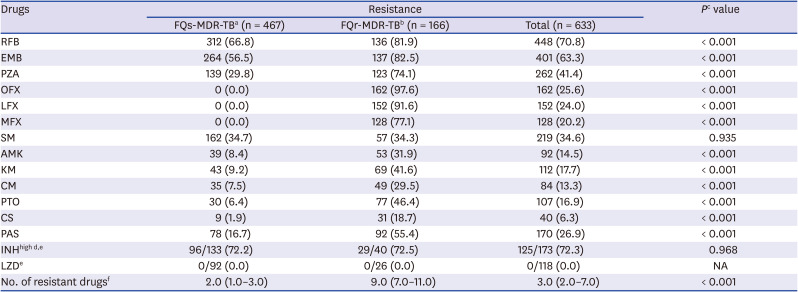
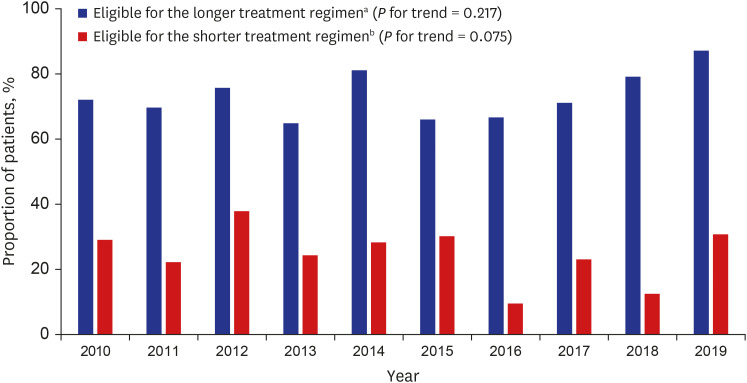




 PDF
PDF Citation
Citation Print
Print



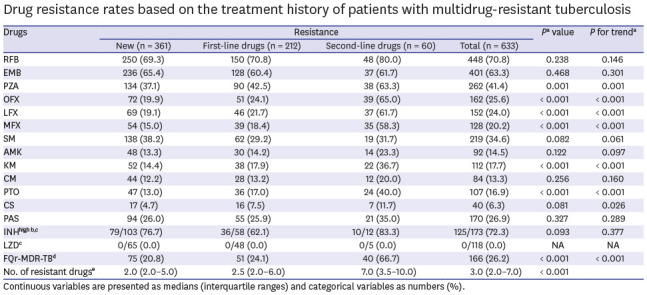

 XML Download
XML Download